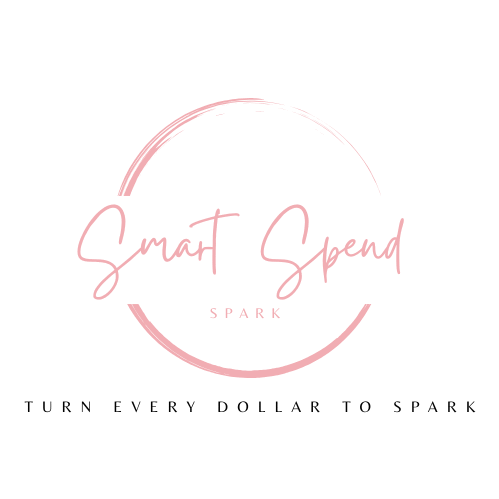Zero-Based Budgeting:
How to Give Every Dollar a Job
Zero-based budgeting helps you control every dollar by assigning it a purpose. Learn what it is, how it works, and how to use it to reach your financial goals.
If you’ve ever reached the end of the month and thought, “Where did all my money go?” — you’re not alone. Most of us know the feeling of swiping our card for groceries, gas, or coffee without realizing how quickly those small expenses add up.
The good news is, there’s a budgeting method that can give you total control of your money. It’s called zero-based budgeting, and it’s all about making sure every single dollar you earn has a job.
Sounds a little intense? Don’t worry — it’s simpler than it seems, and it can completely change the way you handle money.
What Is Zero-Based Budgeting?
Zero-based budgeting is a method where your income minus your expenses equals zero. That doesn’t mean you’re broke at the end of the month — it means you’ve assigned every dollar a purpose.
So instead of leaving money “floating” in your account, you tell it exactly where to go: bills, savings, debt payoff, groceries, entertainment, or even a fun splurge.
For example, if you earn $3,000 a month, you’d create a budget where:
- $1,500 goes to needs (rent, bills, groceries)
- $900 goes to wants (dining out, entertainment, hobbies)
- $600 goes to savings and debt payoff
At the end, your budget balances out to zero. Every dollar has been assigned, and none are left wandering.
Step-by-Step Guide to Creating a Zero-Based
Budget
Zero-based budgeting sounds complicated, but once you break it down, it’s really just a step-by-step process. Here’s how you can set one up
:
- Write Down Your Monthly Income
Start with your total take-home pay (after taxes). If your income changes each month, use the lowest amount you usually make. That way, you won’t be caught off guard. Any extra income can be reassigned later. - List Your Fixed Expenses
These are the bills that stay the same: rent/mortgage, utilities, insurance, car payments, subscriptions. Write them down first, since they’re unavoidable. - Add Your Variable Expenses
Groceries, gas, dining out, and entertainment. These can change month to month, but it helps to set a spending cap. If you think you spend $500 on groceries, try budgeting $450 and challenge yourself to save the difference. - Plan for Savings and Debt
Too often, people wait until the end of the month to see “what’s left” for savings. With zero-based budgeting, you flip that mindset. Savings and debt payoff become line items on your budget, not an afterthought. - Adjust Until Income – Expenses = Zero
This is where the “magic” happens. If you find you have $200 left unassigned, put it toward savings, investments, or extra debt payments. If you’re over, trim from your “wants” category until things balance. - Track Spending Throughout the Month
A budget isn’t set-and-forget. Check in weekly to see how you’re doing. If you overspend in one category, move money from another. This flexibility is what keeps the system realistic.
Tools and Apps That Make Zero-Based Budgeting Easy
You can absolutely use a notebook or spreadsheet, but if you’re like most people, an app will make life easier. Here are a few to try:
- YNAB (You Need A Budget): The most popular zero-based budgeting app. It forces you to assign every dollar and has tons of tutorials. Perfect if you’re serious about tracking.
- EveryDollar: Created by Dave Ramsey’s team, it’s built specifically for zero-based budgeting. The free version is great for beginners, while the premium version connects to your bank.
- Mint: Best for automatic tracking. It pulls your transactions into categories, although you’ll still need to adjust them to fit the zero-based system.
- Goodbudget: A digital envelope system that works well with zero-based budgeting principles.
Choose whatever method feels easiest to stick with. Consistency is more important than the tool.
Pros and Cons of Zero-Based Budgeting
Like any system, zero-based budgeting has its strengths and weaknesses.
Pros:
- Complete control over every dollar
- Reduces overspending by setting limits
- Forces you to save and pay off debt intentionally
- Builds awareness of your financial habits
- Works for both individuals and families
Cons:
- Can feel overwhelming at first
- Takes discipline to check in regularly
- May feel restrictive if you’re used to flexible spending
- Slightly time-consuming, especially the first couple of months
Still, for most people who try it, the benefits far outweigh the drawbacks.
Real-Life Example:
Meet the Johnsons, a family of four with a combined monthly income of $4,500. Before zero-based budgeting, they often overspent on takeout and small purchases without realizing it.
Here’s what their zero-based bud
get looked like:
- $1,800 for rent and utilities
- $600 for groceries
- $300 for gas and transportation
- $400 for dining out and entertainment
- $800 for debt payments
- $600 for savings
At the end of the month, every dollar had a job. By cutting down impulse buys and sticking to their categories, they saved an extra $400 in their very first month. Over a year, that’s nearly $5,000 back in their pocket.
Tips for Making Zero-Based Budgeting Work Long-Term
- Start simple: Don’t create 30 categories. Begin with 8–10 and expand later.
- Expect mistakes: Overspend? It’s fine. Move money around and adjust next month.
- Review monthly: Your budget isn’t set in stone. Life changes, so your budget should too.
- Celebrate wins: Paid off a credit card? Saved $200 more than usual? Reward yourself (within reason).
The key is consistency, not perfection.
Why Zero-Based Budgeting Works
Zero-based budgeting isn’t about restricting yourself — it’s about giving your money a purpose. Instead of wondering where your paycheck went, you’ll know exactly what every dollar did for you.
Whether your goal is to pay off debt, save for a house, or simply stop living paycheck to paycheck, this method can be a game-changer.
At Smart Spend Spark, we believe every dollar has the potential to create a spark — and with zero-based budgeting, you can make sure your sparks build into something brighter.
👉 Have you tried zero-based budgeting? Share your experience in the comments — your story might inspire someone else to take control of their money!




